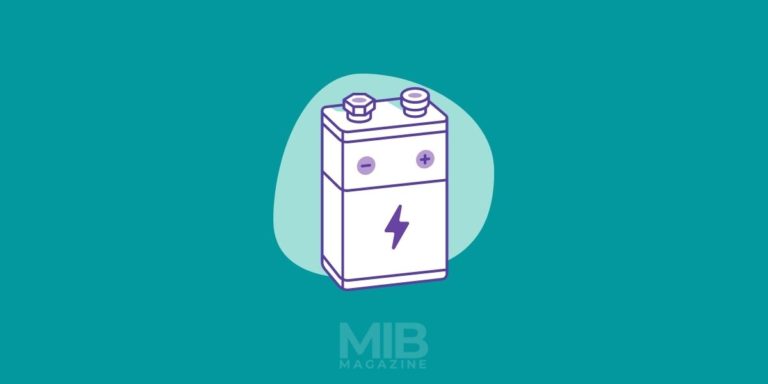Starting E-Waste Recycling Plant – Profitable Business plan

Over the years, the information and technology sector has taken over the world. It has grown so much in the last few decades to the point that electronics have become a part of everything we do. But, unfortunately, skyrocketing demand has led to negative results, and electronic waste, which is also known as e-waste can now be found in every nook and cranny of the globe.
The magnitude of e-waste currently polluting the world
E-waste has become a major threat and pollutant in many countries around the world. In the year 2007, more than 2.14 million tons of e-waste needed to be disposed of. By 2020, this figure had increased to a massive 5.4 million metric tons, and e-waste is estimated to hit 74.6 million metric tons by 2035. It is indeed sad to know that e-waste would be a major problem in the near future. However, the good news is that individuals who have ventured into the e-waste recycling business and those making plans to start up an e-waste recycling business are in for massive cash flow and profits in the nearest future.
For example, computers and all the accessories and equipment surrounding their effective usage hardly have a life span of more than 18 – 24 months. The waste products emanating from them alone is about 70% of e-waste. Telecommunication equipment sums up to about 13 percent of e-waste. More so, electrical and medical equipment sums up to about 15% of e-waste generated every year. With all this waste laying around, there are opportunities to be harnessed in the electronic waste recycling sector.
Current and future prospects of the E-waste recycling industry
The current rate at which mobile phones, televisions, computers, and electronics are being discarded shows that the e-waste recycling business is a fruitful business to venture into. Surprisingly, rare-earth elements and precious metals worth billions of dollars can be found in the e-waste constantly thrown out with reckless abandon. E-waste recycling investors stand to make it now and in the nearest future. It is interesting to know that the E-waste Management Market will be worth $45.78 Billion by 2025 and has been growing at a CAGR rate of 1.8% since 2019.
Types of e-waste
Before we walk you down the alley of how to successfully start an e-waste recycling business, we need to point out the various types of e-waste. They include:
- Damaged computer monitors
- Cathode ray tubes (CRT)
- Motherboards
- Printed circuit boards (PCB)
- Compact disks
- Mobile phones
- Laptop and mobile phone chargers
- Headphones
- Plasma and Liquid crystal display (LCD) televisions
- Refrigerators and air conditioners
Methods used to recycle e-waste
A variety of methods can be employed to recycle different types of e-waste successfully. For cathode ray tubes used in ATMs, video cameras, computer monitors, and television screens, a simple process of breaking and removing the yoke can be employed. When it comes to printed circuit boards where chips and other electronic components are placed, desoldering and complete removal of the computer chips are the first things to do. Subsequently, the boards can be burned openly and bathed in acid to remove the metals present.
For gold-plated components and chips, nitric and hydrochloric acid can be used to strip them off chemically. More so, burning tends to bring the metals out of the chips. To recycle computer wires, open burning and stripping the wires will expose the copper wire for full extraction. Finally, to recycle plastic from keyboards, monitors, printers, and other electronics, shredding works efficiently. However, to recycle and reuse plastic, low temperatures can be used to melt them.
Precious metals that are present in e-waste
Just before we go into the steps needed to start an e-waste recycling business, we need to highlight major rare-earth elements and precious metals that you stand to gain massively from when you begin your journey into the e-waste recycling business. Identifying and extracting these precious metals can be a game-changer and can bring in unprecedented profits for your business. The following products can be obtained from the recycling of e-waste.
Aluminum
This can be gotten from electrolytic capacitors and almost every discarded electronic product that uses more than a few watts of power.
Copper
Copper is present in printed circuit board tracks and is the major element in the copper wire of electrical gadgets.
Zinc
Zinc used in plating the steel parts of electronic products can be extracted through recycling.
Tin
A lot of tin can be extracted from solder and coatings on component leads.
Silicon
Silicon is present in glass, printed circuit boards, ICs, and transistors. Effective recycling can have them all recovered.
Gold
Though present in small quantities, gold can be gotten from connector plating and computer equipment.
Lithium and Nickel
From lithium-ion batteries and nickel-cadmium batteries, lithium and Nickel respectively can be obtained.
Steps to take to start an e-waste recycling business
The truth is that the current overall rate of the collection and recycling of e-waste is very low. However, considering the fact that the amount of e-waste generated annually is gradually upsetting the balance of nature, this is the best time to start an e-waste recycling business. Thus, you will be helping mother earth get rid of the continuous accumulation of e-waste that could cause havoc if left unchecked. With that said, let us now focus on the steps you can take to start up a successful e-waste recycling business. Please bear in mind that this list is not exhaustive; notwithstanding, it contains the major steps to take to get started.
1. Conduct extensive research and learn more about the e-waste recycling industry
It is advisable to do a lot of research and learn a lot about any business you aim to go into. The e-waste recycling business is the same. You will need to have a good understanding of the electronics and recycling industry. Additionally, you can take advantage of the internet to check out the websites of e-waste companies that are already doing well and learn the business model they employ.
Before you begin, you will also need to prepare a comprehensive market analysis and identify the major electronic products that are being discarded in your area. Do these and take the next step.
2. Choose a business model
The next step to take is to choose a business model before starting out. The e-waste recycling business is capital intensive, and you might have to decide between two major models depending on the level of investment you are willing to start with.
Taking a step towards the franchise-based operation model can be very fruitful. You will start your e-waste recycling business as a franchise unit of an e-waste recycling company that is already established. With this model, you will be benefiting from the infrastructure owned by the company. In addition, the capital expenditures and other operating expenses are always lower with this kind of model. However, you would have to agree to certain terms and conditions.
You can also choose to bear the entire investment cost by going with the self-owned business model. However, note that the capital expenditures and operating expenses are higher with this model.
3. Obtain relevant licenses and permissions
This step is very important. To avoid many problems with the local authorities, it is essential that you find out and obtain all necessary licenses and permissions to operate. In addition, you will likely have to contact your community’s public welfare department to make inquiries about the waste disposal and planning standards for e-waste recycling businesses. Finally, note that you might have to go for e-certification programs supported by the Institute of Scrap Recycling Industries (ISRI).
These programs may cost between $5,000 – $50,000 and can span a few months. State and federal legislations impact the e-waste recycling industry enormously; however, do not let this deter you because it is positive for the industry in the long run as it promotes a higher recovery rate where landfill bans are put in force. More so, it serves to curtail the export of recyclable e-waste to developing countries.
4. Determine the services you will be offering
The e-waste recycling business is a combination of different services. You can choose to engage in all at once, but if you start with minimal capital, you can begin with one service and add others as you expand.
These services include the collection of electronics that have been used and about to be discarded, repairing minor faults, or upgrading the electronic products and reselling them. You can as well engage in disassembling the components and processing them as scrap. More so, you can engage in shredding of whole units and selling each commodity streams for recycling or, better still, engage in brokering, which is the service of selling used electronics to other vendors.
5. Write a business plan
This step involves developing a business plan for your e-waste recycling business. Not having a plan is a sure way to end up in failure. If you want to protect the investment you have made, it is important to have a strategic plan that will include the initial start-up cost and running cost. More so, you should include a list of companies you will be getting a steady supply of e-waste from.
Additionally, your pricing strategy, marketing strategy, and production capacity should be included in this business plan. When things begin to take shape, always ensure that you run your newly started e-waste recycling business ethically and legally.
6. Acquire quality e-waste recycling equipment
Getting basic equipment for your e-waste recycling business is the next step you should take. Cathode ray tubes from computer monitors and television screens make up a majority of e-waste. A functional disassembly line is crucial for every e-waste recycling business. Other equipments include primary and secondary shredders, magnetic separators, hammer mill, belt conveyor, metal detector, suspension magnet, and color sorter, amongst others should be acquired and installed for use. Ensure that you purchase the best quality equipment that will serve you long-term.
7. Get the best business management software
When rendering e-waste recycling services, it is important to understand that you need to pay special attention to details. To track processes, monitor the flow of recycling, and have laid down plans on how to manage the business. You may even need a business management software with an integrated framework. This will relieve you of the stress of tracking raw materials across an expansive value chain. Utilizing a business management software is an important step you should not take for granted if you want to create an e-waste recycling business that will stand the test of time.
8. Set up safety and security measures
This step is very important to safeguard all employees and the facility. It is important to note that heavy chemicals toxic to humans are present in large quantities in e-waste, such as mobile phones, laptops, and scanners. Moreover, brominated fire retardants used in the recycling process can cause health issues if workers are constantly exposed to them. Therefore, safety measures should be put in place to provide total protection from these hazardous materials. It is also very essential to restrict access and securely monitor the e-waste business site. Having fire insurance coverage for your facility and health insurance for workers is also very important
Conclusion
The growth of the E-waste recycling industry is not stopping anytime soon. Starting an e-waste recycling business is one of the best ideas of the century. Although it requires a lot of research, licenses, planning, and investment, However, with careful planning and a winning strategy, you can hit it big. Although the list of steps above are the major ones you will need to take to start on the right note, there are many more steps you will likely take during the course of building your e-waste recycling business.
FAQs
E-waste recycling is the process of salvaging, extracting and reusing electronic components from discarded electronic equipment such as computers, mobile phones, electronic toys, entertainment systems, etc.
The purpose of e-waste recycling is to reduce the environmental impact of waste and to recover resources such as rare metals, plastics and other materials that may have some value in manufacturing new products.
An E-Waste Recycling Plant can accept a wide variety of electronic items, such as computers, laptops, mobile phones, televisions, stereo systems, gaming consoles, printers, monitors, and more.
The recycling process typically involves demanufacturing the equipment into smaller components that are then sorted and treated to extract valuable resources such as metals and plastic. The remaining materials may then be recycled, reused or disposed of in an environmentally responsible manner.
The main benefits of recycling E-Waste are that it helps to conserve resources by reusing materials, reduces energy consumption and greenhouse gas emissions associated with manufacturing, reduces landfilling and water pollution risks, and helps to reduce the need for mining virgin materials.
The electronic waste collected from the E-Waste Recycling Plant is separated and processed in accordance with industry-standard methods. Valuable components are salvaged and reused, while hazardous materials are treated and disposed of in an environmentally safe manner.
Generally, there is no fee associated with disposing of E-Waste at a Recycling Plant. In some cases, a fee may be charged depending on the volume of materials accepted.
Most E-Waste Recycling Plants are certified by the relevant government agency in operation and adhere to the standards of sustainable disposal and recycling.
Yes, E-waste recycling plants are designed to recycle electronic waste in a sustainable and environmentally safe manner.
To help reduce the amount of electronic waste being generated, you can donate or reuse old electronics and purchase items manufactured with recycled materials. You can also urge local businesses and organizations to have e-waste recycling policies in place.






